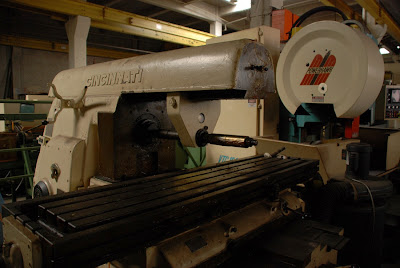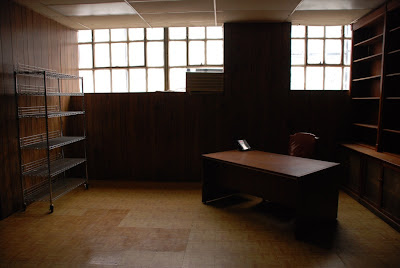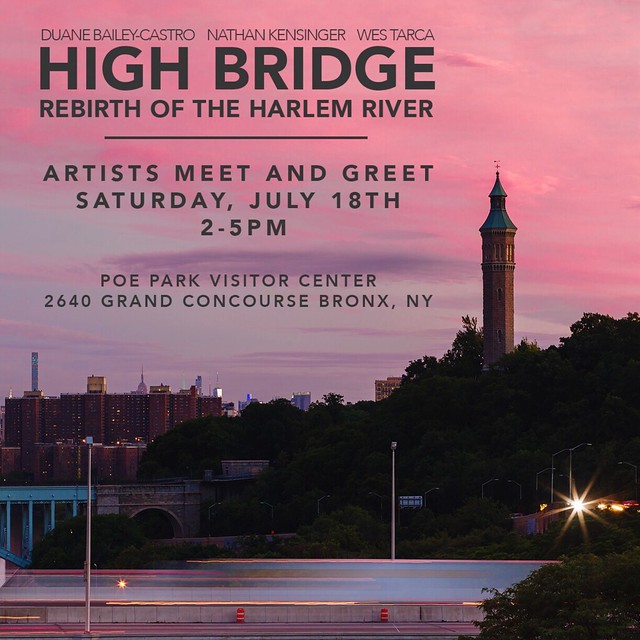The South Edgemere Wasteland
 September 30, 2010 - This photo essay is part of a three part series exploring Edgemere, an isolated waterfront neighborhood in The Rockaways. Each photo essay focuses on one of Edgemere's three distinct geographic areas: The South Edgemere Wasteland, The North Edgemere Shore and The Edgemere Landfill.
September 30, 2010 - This photo essay is part of a three part series exploring Edgemere, an isolated waterfront neighborhood in The Rockaways. Each photo essay focuses on one of Edgemere's three distinct geographic areas: The South Edgemere Wasteland, The North Edgemere Shore and The Edgemere Landfill.
Edgemere is a Queens waterfront neighborhood split in two. In the north, residents live on the shores of Jamaica Bay. In the south, a vast plain covers more then 20 blocks of abandoned oceanfront. This city-owned wasteland is a part of the Arverne Urban Renewal Area, and may soon be redeveloped as Arverne East. Stretching along the Rockaway shoreline from Beach 32nd Street to Beach 56th Place, this property has remained empty for decades. Forgotten New York once called it "one of the eeriest places in New York City," while New York Magazine has described the Arverne renewal area as "barren blocks and de-mapped streets merging with the emptiness of the ocean to form a single great desolation... a testing ground for urban entropy, a place where a man was once chased and mauled by a pack of wild dogs, a legacy of Lindsay-era slum clearance, Moses-era central-planning hubris, and native New York development inertia."
In a different era, Edgemere's seaside was a thriving resort, with grand hotels, a bustling boardwalk, and thousands of residents. Today, it is devoid of buildings and permanent residents, and "has stood vacant, except for plant life and wild dogs, for more than 35 years, when thousands of summer bungalows and stores were plowed under as part of the Arverne Urban Renewal Project, a massive building project that was put on hold and never revived," according to the Rockaway newspaper The Wave. The city continues to maintain the streets in south Edgemere - to some degree - with signs lurking in the bushes and new curb cuts floating like islands in the urban wilderness. But few sidewalks remain intact, most roadways are pockmarked with potholes or covered in shifting sands, and the entire area is used as a communal dumping ground. Clothing, mattresses, toys and used condoms are discarded in the middle of streets. Some remain undisturbed for over a month.
Over the decades nature has reclaimed southern Edgemere. Groves of trees, acres of bushes, wild flowers, rabbits, and flocks of birds all thrive within sight of the nearby elevated MTA line. However, few people can be seen walking through this no-mans-land, perhaps because of its history of wild dog attacks. In 2001, two Rockaway residents "were brutalized by a pack of wild dogs" in the Arverne Urban Renewal Area, according to The Wave. The dogs came from an abandoned block, "stalked" their first victim, and "dragged him off the boardwalk onto an adjacent lot and began consuming his flesh," according to The Wave. In spite of this, several homeless camps are currently hidden deep in the Edgemere overgrowth. Some are as simple as a mattress tossed in the bushes or a sofa placed in a clearing. Others are more elaborate, including one camp with platform beds on a stone patio surrounded by a garden and fence. Another camp is large enough to house several families.
Edgemere is no stranger to beach camps and hand-built shelters. In the early 1900's, it had "the second largest tent city in the Rockaways" according to "The Rockaways" by Emil R. Lucev. Vacationers could rent a tent and sleep on the beach, and "at the end of the season, the tents were folded and put in storage buildings." During this era, the beach was also home to "Charlie the Hermit," according to The NY Times, "the strange old man who had lived for years in a hut on the beach between Arverne and Edgemere." In 1912, as land became increasingly valuable, Charlie was evicted from the hand-built "hovel" he had built from "driftwood and bits of wreckage," and which he had lived in for 31 years.
"A century ago Edgemere's streets were lined with gracious beachfront hotels," according to a 2005 Forgotten New York essay, including the "lavish" Edgemere Hotel, built in 1895, and "the majestic Hotel Lorraine," built in 1908. By the 1920's, "bungalow courts and colonies saturated the section," according to "The Rockaways" and "by the late 1930's, Edgemere literally ran out of space to build year round-residences and summer facilities for the throngs of beach lovers coming down to bathe." It is difficult to reconcile these descriptions with present day Edgemere, which has reverted to its desolate, wild past. For some, it is "a depressing reminder that a place once associated with pleasure for millions of people no longer existed," according to Lawrence and Carol Kaplan, the authors of "Between Ocean and City: The Transformation of Rockaway New York."
Unlike neighboring Far Rockaway, few artifacts remain from Edgemere's bungalow era, other then dozens of broken fire hydrants. "In the early 60's -- some say particularly because of the coming of the jet age and fast flights to tropical climes -- the Rockaway economy took a turn toward the terrible. The city, in what one local official termed one of its ''urban renewal binges,'' tore down thousands of bungalows, leaving wide tracts vacant or dotting them with low-income housing projects," according to The NY Times. Mayor John Lindsay had hopes "that the federal government would provide money for new housing. But... ultimately, Rockaway fell victim to the economic downturn of the 1970s," according to The NY Times. Today, even the historic boardwalk along Edgemere's shore has been ripped away, to be replaced with a new concrete path. Lumber from the old boardwalk covers a nearby athletic field, which has also been abandoned.
The city has never completely forgotten the Arverne Urban Renewal Area. "For nearly four decades, grand plans were offered for the 52-block stretch from Beach 32nd to 84th Streets, between Rockaway Beach Boulevard and the boardwalk. They fell through," The NY Times wrote in 2003. These plans ranged from "a phalanx of mid- and high-rise condominium and rental apartment buildings" that failed with "the collapse of the real estate market in the early 90's," and a "more than $1 billion... enclosed amusement area on the Arverne site, to be called Destination Technodome, with rides, movie theaters, an indoor ski slope and a hotel."
In recent years, a new development called Arverne By The Sea has grown in the western end of the Arverne Urban Renewal Area. In 2010, New York Magazine celebrated this growing community as "a new urbanist experiment" and "New York City’s newest and most improbable neighborhood," with "an emphasis on traditional streets, generous public spaces, and architecture meant to look old in its newness." Edgemere's empty lots may be developed next. They are scheduled to be remade into Arverne East, a development which "will consist of 47-acres of housing and commercial space, a 35-acre nature preserve and a 15-acre dune preserve," according to a 2006 report by The NYC Department of Housing Preservation and Development.
Unfortunately, as in the 1970's and the 1990's, the recent economic slump has cast a shadow over the plans for Arverne East. "Since the economic downturn, funding has stalled and darkened the project's outlook," The Wave reported in 2009. Long term residents are not holding their breathe. "For the people who live east of Beach 59 Street, urban renewal are just words and promises that come every decade or so," wrote a commentator in The Wave in August, 2010, calling Arverne East "a pipedream." Ground has yet to be broken on any new homes in the Edgemere wasteland.
Perhaps the poet Lawrence Ferlinghetti best summarizes the region's troubled, cyclical history in his poem "A Far Rockaway of the Heart," writing "Everything changes and nothing changes/Centuries end/and all goes on/as if nothing ever ends."

























































